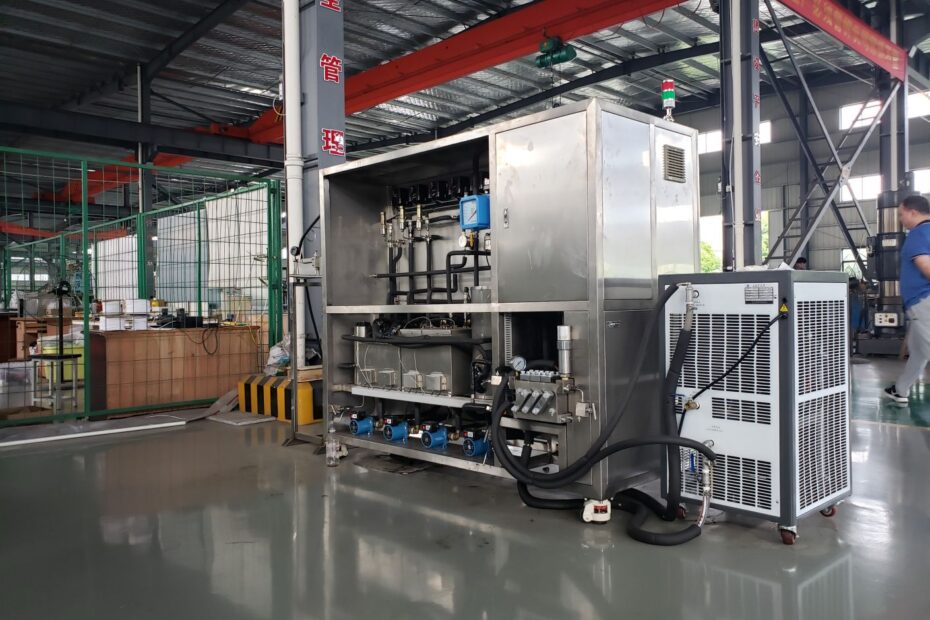The world of essential oil production has witnessed a surge in innovative techniques, with Supercritical CO2 extraction and traditional Distillation emerging as prominent methods. Both processes are integral to extracting aromatic compounds from plant materials, yet they differ significantly in their approach and outcomes.
What Is Distillation
Distillation refers to the mass transfer process that uses the difference in volatility of each component in a liquid mixture to separate the components.Distillation is a thermodynamic separation process that uses the different boiling points of the components in a mixed liquid or liquid-solid system to evaporate the low-boiling component and then condense it to separate the entire component. It is a combination of two unit operations, evaporation and condensation.
Distillation, a time-tested method, involves heating plant material to release volatile compounds, which are then condensed back into a liquid. This process relies on the principle that different compounds have varying boiling points, allowing for their separation. Distillation has been the cornerstone of essential oil production for centuries, offering a reliable and familiar approach.
What Is Supercritical CO2 Extraction Process
Supercritical CO2 fluid extraction technology is a new separation technology in modern chemical separation. It has the characteristics of fast mass transfer rate, strong penetration ability, high extraction efficiency and low operating temperature. This technology has been widely used in medicine, food, chemical industry and other industries.
The supercritical CO2 fluid extraction device is equipment used for supercritical fluid extraction. The device is mainly composed of a freezing part, a pressurizing part, an extraction part, a separation part and a recovery part. However, depending on the production process and fluid medium, the composition of the device Also different.
Its main extraction process consists of two parts: extraction and separation. In the extraction equipment, at a specific temperature and pressure, the raw materials are brought into contact with the supercritical fluid. When the dynamic balance of the material components between gas and liquid is reached, the temperature and pressure are adjusted to separate the extraction product from the supercritical fluid to complete the supercritical process. The entire process of extraction.
The supercritical CO2 extraction device can be used to extract materials (solid and liquid) at high pressure and suitable temperature under separator replacement conditions, so that the soluble materials can decompose the target products during the extraction and separation process.
On the other hand, Supercritical CO2 extraction leverages carbon dioxide in its supercritical state—a phase between a liquid and a gas. This method involves passing supercritical CO2 through plant material, dissolving essential oils and other desired compounds. Once the pressure is reduced, the CO2 evaporates, leaving behind a pure and potent essential oil.
Comparative Analysis: Supercritical CO2 Extraction Process VS. Distillation
To delve deeper into the nuances of these techniques, let’s compare them across various parameters:
1. Efficiency
Both methods exhibit efficiency, but Supercritical CO2 extraction often outshines distillation. The use of CO2 as a solvent allows for a more selective extraction, capturing specific compounds without altering their chemical structure. In contrast, distillation may subject the delicate aromatic molecules to heat, potentially diminishing the overall quality.
2. Temperature Sensitivity
Distillation is notorious for its temperature sensitivity. Some delicate compounds may degrade under high temperatures, affecting the aroma and therapeutic properties of the essential oil. Supercritical CO2 extraction, being a low-temperature process, mitigates this risk, ensuring the preservation of the plant’s intrinsic qualities.
3. Selectivity
Supercritical CO2 extraction excels in selectivity, precisely targeting desired compounds without extracting unwanted components. Distillation, while effective, may result in a broader spectrum of extracted compounds, potentially diluting the purity of the essential oil.
4. Environmental Impact
In terms of environmental impact, Supercritical CO2 extraction holds an eco-friendly edge. CO2 is a naturally occurring gas, and its use in extraction processes avoids the introduction of harmful solvents into the environment. Distillation, depending on the fuel source for heating, may contribute to carbon emissions and environmental degradation.
| Criteria | Supercritical CO2 Extraction | Distillation |
|---|---|---|
| Efficiency | High | Moderate to High |
| Temperature Sensitivity | Low | High |
| Selectivity | High | Moderate |
| Environmental Impact | Eco-friendly | Variable |
Conclusion
In the quest for optimal essential oil production, the choice between Supercritical CO2 extraction Process and Distillation ultimately hinges on specific preferences and priorities. While distillation upholds tradition and yields satisfactory results, Supercritical CO2 extraction brings innovation and precision to the forefront. The decision should align with the desired quality, environmental considerations, and the nuanced characteristics of the plant material in question.
As the essential oil industry continues to evolve, embracing both traditional and modern approaches, producers and consumers alike are empowered to make informed choices that resonate with their values and expectations. In this dynamic landscape, the synergy between tradition and innovation creates a harmonious blend, ensuring the aromatic treasures of nature are harnessed with finesse and care.

